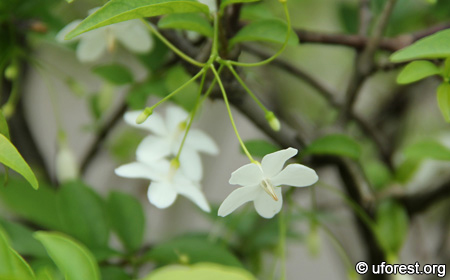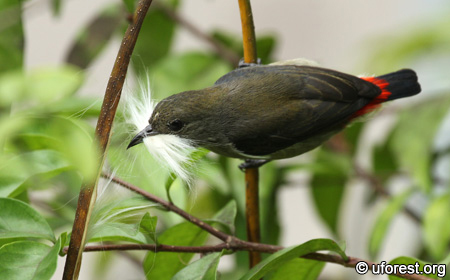Wrightia religiosa (Teijsm. & Binn.) Kurz
| Etymology | Genus | After William Wright, a 19th century Scottish physician and botanist |
|---|---|---|
| Species | Of religious significance: Thai Buddhists cultivated it at their temples | |
| Family | Apocynaceae | |
| Synonyms | Echites religiosus Teijsm. & Binn. | |
| Common Names | Water Jasmine, Wild Water Plum, Common Wrightia, Scared Buddha | |
| Status | Exotic: Casual | |
| Form | Shrub or small tree | |
| Native Distribution | Thailand, Cambodia, and Peninsular Malaysia | |
Diagnostics:
This plant is very recognisable by its numerous white flowers which bloom frequently. The flowers are five-petalled and have a "beak" at the centre. The leaves are thin, elliptic, oppositely arranged, and gives off white sap when broken.
Interesting Facts:
The Water Jasmine can grow up to 5m naturally (Middleton, 2007). However, its dwarfed appearance is more well-known in tropical bonsai, where it is probably one of the most popular species being used. The fruits are paired and elongated, which splits to reveal a row of seeds with fluffy white hairs.
Middleton (2007) indicated that the native distribution of Wrightia religiosa (indicated above) is obscured because of its wide-spread cultivation around the region.

A normal shrubby form.

A Water Jasmine bonsai.

Oppositely arranged elliptic leaves

The pendulous flowers.

Unripe paired fruits.

A Scarlet-backed Flowerpecker collecting the fluffy seeds in its mouth.
References
Middleton DJ. (2007) Apocynaceae (Subfamilies Rauvolfioideae and Apocynoideae). Flora Malesiana Volume 18. 474 pp.Author: Siyang
Posted: 2012-12-04 / Modified: 2018-11-16
Google Ads